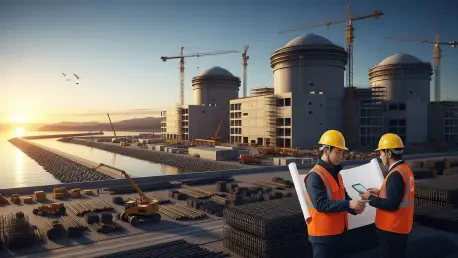As Ankara hosted a state visit that broke a 13-year gap, the leaders of South Korea and Turkey set in motion a plan that sought tangible outcomes over ceremony, pairing national ambition with pragmatic collaboration across strategic industries. President Lee Jae Myung and President Recep Tayyip Erdoğan framed the moment with a joint statement that put “future-oriented” at the center, shifting the relationship from symbolic affinity to performance-based cooperation in defense, energy, infrastructure, and humanitarian work. The timing mattered: following the G20 and a broader Middle East–Africa swing, the summit gave both governments a platform to convert diplomatic momentum into contracts and institutional channels. This was not merely about procurement or access to markets; it was about linking production lines, training pipelines, and regulatory pathways so that projects could move from bid to build without stalling in bureaucracy or political drift.
Defense And Energy As Immediate Pillars
Defense emerged as both a legacy anchor and a forward-leaning bet. Building on the Altay main battle tank program—now fielding a Korean powerpack—the two sides mapped an agenda that emphasized co-production, technology transfer, and sustained training. The intent was clear: align industrial bases to reduce vulnerability to supply shocks while scaling into higher-value systems. Joint facilities and test ranges, standardized maintenance doctrines, and interoperable software stacks were discussed as ways to compress development cycles. That approach also signaled an ambition to step beyond licensed assembly toward genuinely co-developed platforms. For Ankara, the collaboration promised resilience and export reach; for Seoul, it offered a diversified demand base and a proving ground that could sharpen competitiveness in armor, propulsion, and fire-control technologies.
If defense provided the muscle, energy supplied the backbone, with the planned nuclear power plant at Sinop as the headline test. KEPCO’s bid drew attention not only for price and schedule but also for operational safety, fuel-cycle management, and the ability to localize components without diluting standards. Both governments pledged a streamlined evaluation, indicating that technical due diligence would be matched by predictable public oversight. That mattered for financing: lenders typically demand clarity on liability frameworks, grid integration, and long-term service arrangements. In parallel, the two sides nodded to renewables and grid modernization, seeing a portfolio approach as critical to power stability. With nuclear as baseload and wind-solar growth as peak management, Turkey’s system planning could gain optionality, while Korean firms would find opportunities in EPC, digital control systems, and lifecycle maintenance.
Institutions, Infrastructure, And Humanitarian Reach
A dormant joint economic commission was slated to resume after a decade on ice, turning scattered initiatives into a structured program with milestones and sectoral working groups. That institutional lift was paired with concrete corporate roles, from KEPCO in nuclear to SK Plasma in health, where Turkey’s blood-products initiative highlighted how industrial expertise could dovetail with public health goals. Transportation projects—supported by an MOU on road infrastructure—advanced the logic of connectivity, promising better freight flows between Anatolia and European corridors. The MOU on veterans’ affairs also carried weight beyond ceremony, reinforcing a historical throughline from the Korean War to modern-day alliance signaling. Diplomatic notes rounded out the picture: Turkey affirmed support for Seoul’s North Korea policy, while Seoul acknowledged Ankara’s mediation efforts in the Middle East and pledged expanded aid for Syrian refugees hosted in Turkey.
The trajectory now depended on execution, and the summit closed with steps that made follow-through more likely. The three signed MOUs set formal guardrails; the revived commission created a venue to troubleshoot; and public backing for corporate bids reduced political risk. Near-term priorities centered on defense co-development roadmaps, Sinop bid evaluation, and shovel-ready transport upgrades that could absorb capital quickly. Medium-term workstreams targeted renewable integration, training exchanges, and health manufacturing scale-up, with export certification as a critical hinge. Taken together, the agenda framed actionable next moves—ratify financing tools, standardize procurement interfaces, and sequence workforce training with plant timelines—so momentum translated into ground activity. The message had been practical and unambiguous: institutional scaffolding, diversified sectors, and public–private alignment would define the partnership’s durability.









